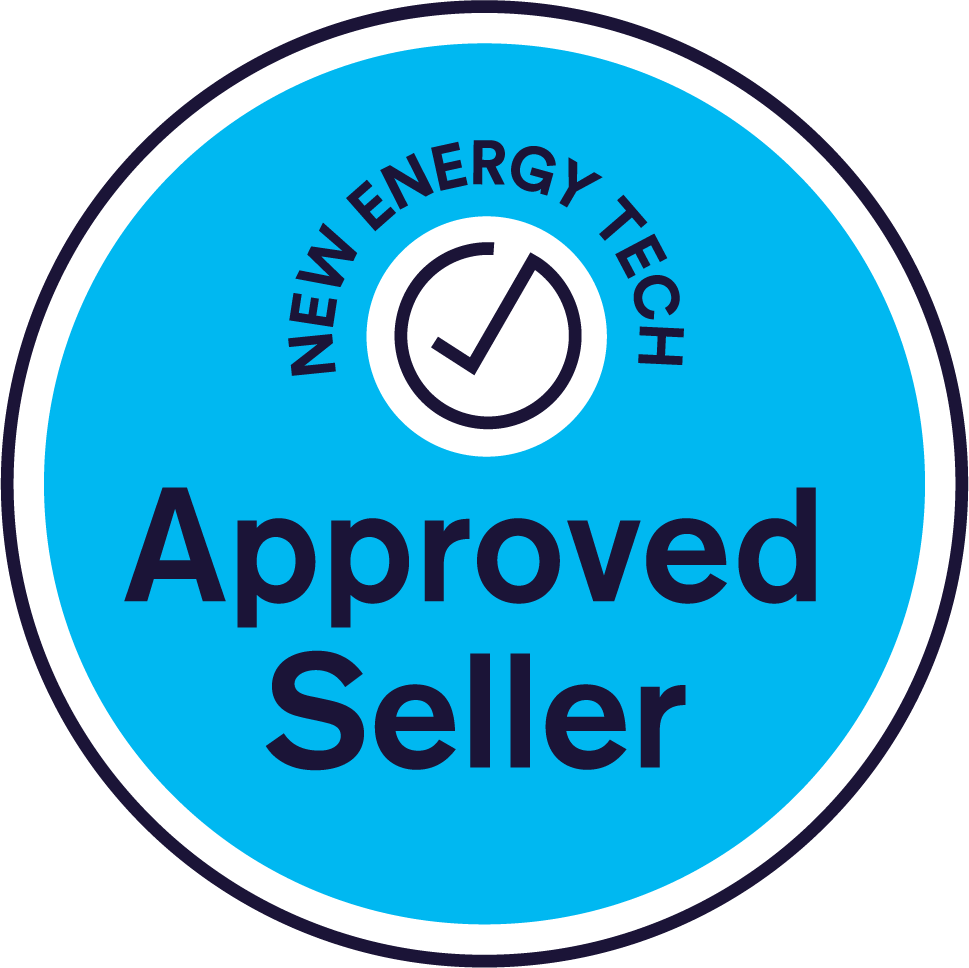FREQUENTLY ASKED QUESTIONS
Solar power in its various forms can certainly be confusing if you’re new to the world of renewable energy. Below is our solar power FAQ where answers to common questions we see asked about solar power in relation to residential grid connect systems. This solar power FAQ has sections of different interest, such as climate, installation and general questions.
General Grid Connect Solar Power FAQ
Grid connect systems, which are the most common in built up areas, supply solar electricity through an inverter directly to the household and to the electricity grid if the system is providing more energy than the house needs. When power is supplied to the mains grid, the home owner usually receives a credit or a payment for that electricity. This is called a feed in tariff.
Grid connect systems, which are the most common in built up areas, supply solar electricity through an inverter directly to the household and to the electricity grid if the system is providing more energy than the house needs. When power is supplied to the mains grid, the home owner usually receives a credit or a payment for that electricity. This is called a feed in tariff.
Most certainly. For example, a system with solar panels facing in a southerly direction will generate far less than one with a northerly aspect. However, east/west installations can be a good option depending on the installation scenario.
Grid connect systems, which are the most common in built up areas, supply solar electricity through an inverter directly to the household and to the electricity grid if the system is providing more energy than the house needs. When power is supplied to the mains grid, the home owner usually receives a credit or a payment for that electricity. This is called a feed in tariff.
Grid connect systems, which are the most common in built up areas, supply solar electricity through an inverter directly to the household and to the electricity grid if the system is providing more energy than the house needs. When power is supplied to the mains grid, the home owner usually receives a credit or a payment for that electricity. This is called a feed in tariff.
Prices vary according to size and location – try our quick solar quote tool to determine the cost.
A feed in tariff is whereby a grid connect system owner is paid for the electricity their system generates by a utility or government agency. There are two different types of tariffs, gross and net. A gross feed in tariff pays a premium on all electricity produced whereas a net feed in tariff only pays on surplus energy created by the system. In Australia, net feed in tariffs are predominant.
Several aspects will need to be evaluated to determine if your home is a good solar site, such as orientation, space available, shadows on the space available and your current electricity usage. The best site will be one with adequate north-facing roofs that have no shade. Variations on that will cut into the productivity of the system.
The life of Solar modules that have been tested in the field showing small reductions in power output after 20 years, mostly because the glass surface becomes a bit dull and reflects more light. All our solar panels carry an output warranty of 25 years. There are solar panels delivering power in Australia today that were installed more that 30 years ago. The electronic components such as inverters, being the most sensitive, will last 10 -15 years.
Solar Panels: minimum 10 year product warranty and 25 year performance guarantee
Mounting System: 10-year product warranty (manufacturer)
Inverter: 5 – 10 year warranty
Workmanship: 5 year warranty on workmanship (installer)
Between monocrystalline and polycrystalline there isn’t a lot of difference. However, a polycrystalline panel is slightly larger than the equivalent wattage in monocrystalline. Thin film panels are larger again. That extra space can take up valuable rooftop real estate in terms of adding extra panels at a later date. There are other issues to consider with thin film panels.
The strength of the solar energy (radiation) available depends on the time of year, the time of day, and the latitude of the generation point. The amount of energy that the system generates can change due to: the amount of dust and water vapour in the air, how much cloud cover, any shading of the solar panels, and the quality of the solar modules.
In a grid connect system, as you are still tied to the mains power supply, any deficit will come from the mains grid.
With an grid connected system, there is very little maintenance. Electronic components should be maintenance free. Solar Experts Australia systems come with complete instructions for maintenance.
As the Energy Matters systems are designed to Australian Standards, the reliability of components and consistency of power supply will be more than adequate for the loads specified.
Carbon emissions and climate change
The heart of a photovoltaic solar power system is the solar array. Made up of multiple panels (individually measuring roughly 1 by 1.5 meters), this array absorbs the energy of a specific range of available sunlight and converts this energy into electrical energy.
The array mounts on a frame that allows the panels to be secure with minimal interference with the waterproofing and structure of the roof. Most importantly it provides the correct aspect and elevation for the array so as that the maximum amount of available sunlight in received and converted.
A cable runs down from the array to the inverter. The inverter is a device that efficiently converts the widely fluctuating power from the solar array into a predictable and usable energy feed.
A second cable connects the inverter to your house’s switchboard, which is in turn connects to the main power grid. This creates a continuous and dynamic system for the contribution of solar energy to your house. The inverter also acts as a simple data logger. An information screen on the inverter will display total energy production, daily energy production, and instantaneous power. These figures will fluctuate depending on the time of year, the cloud cover, and temperature, and will allow you to keep a record of your system’s performance.
Solar power systems can also optionally include easy-to-use remote monitors, internet enabled data loggers, and even sensors to determine solar availability, panel temperature, air temperature, and wind speed. Ask your sales representative for more information.
Most insurers will allow you to include the system under your home and contents insurance, but please check with your insurance company first.
Yes. You can get additional solar panels at any time to increase generating capability but you might have to upgrade to a larger inverter. Alternatively you could purchase a larger inverter when installing the system initially and then plan to add some extra solar panels later.
Although solar electricity is pollution-free, PV systems require a certain amount of energy, which must be ‘reimbursed’ before they can be considered as renewable and clean. This is “embodied energy”. An assessment from the International Energy Agency concluded in mid 2006 that roof-top solar PV systems recover their energy content (from manufacturing and recycling) within 1.6 to 1.8 years in Australia. That figure has since seen improvement.
What about the energy it takes to produce Once they have reimbursed their initial energy input, roof-top PV systems can avoid the emission of 40 tonnes of CO2. Thia depends on their location and on the local electricity mix available. Roof-top PV systems in Australia during their 30 year lifespan can expect to produce around 17 times the amount of energy needed for manufacture, installation and dismantling.
A base installation rate includes the grid connect system’s installation on a pitched metal roof facing north with appropriate surface area available. Additional costs may accrue for a flat or tiled roof or for any equipment upgrades and extended warranties.
If your question isn't there, don't hesitate to reach out!
Electrical & Installation Solar Power FAQ
No, the inverter handles the incoming charge and converts it to AC electricity for use in your home. Solar regulators are more likely in off-grid systems.
In order to install a grid connected solar power system at your premises, you will need to have a compatible switchboard and meter.
To help you determine if your meter and switchboard are compatible and approximate pricing for upgrades if required.
A meter exchange may be necessary after the installation of your new solar system. The energy that your solar system produces interacts with the main power grid and the loads in your house.
Without an appropriate mains meter, any energy you sell to the power grid cannot be accurately measured. It could even be completely disregarded, greatly reducing the system’s effectiveness in reducing your energy bill. A ‘bi-directional’ meter replaces the existing one-way ‘detented’ meter, allowing the reading of energy in both directions. That is, both buy and sell.
Grid connect systems direct excess electricity produced during the day back into the local electricity grid. You then receive a credit for any power that your system supplied to the grid. During the night when your system does not produce and electricity you draw your power from the grid and your electricity meter measures your consumption.
The grid connect inverter will automatically shut itself off within a few milliseconds of a blackout. This avoids the potential of a dangerous “brown-out” in your home and to prevent back feeding into the grid. Therefore even though you have a solar system during a blackout you will not have power available. If you want to keep on having electricity available during a blackout then you would need back up batteries. This will add to the cost of the system.
Yes, battery backup systems require additional components – which can be costly; although pricing is rapidly dropping.
The solar system wires into your existing fuse box via a 15amp circuit breaker.
Usually the inverter goes alongside the fuse box. The inverter is silent and has a display to show the electricity generated and other data options such as total electricity generated since installation, are available.
Usually the inverter goes alongside the fuse box. The inverter is silent and has a display to show the electricity generated and other data options such as total electricity generated since installation, are available.
Solar panels take light from the sun and make electricity. Solar hot water systems take heat from the sun and heat water. It is easy to remember:
- Heat from the sun heats the water.
- Light from the sun turns on the lights.
1.0 KW system needs approximately 10m2, a 1.5KW system needs approximately 15m2 and so forth.
The system weighs approximately 27 kilograms per square meter (a 1KW system is approximately 10 square meters).
All Solar Experts Australia’s installers are clean energy council certified. If you think your installation is inappropriate , you are covered with 10 years workmanship warranty in which we make sure that customers issues are resolved to their satisfaction.
If you are not satisfied with your system, call us on 1800 965 955 and someone from our team will assist you straight away. Customer satisfaction is our top most priority and we make sure that all our customers needs and requirements are met.
Online details of personal information are only required when applying for easy-payments.
Please note all personal details collected is treated in accordance with the Pricacy Act 1988
Have a question not covered?
Brand Partners














